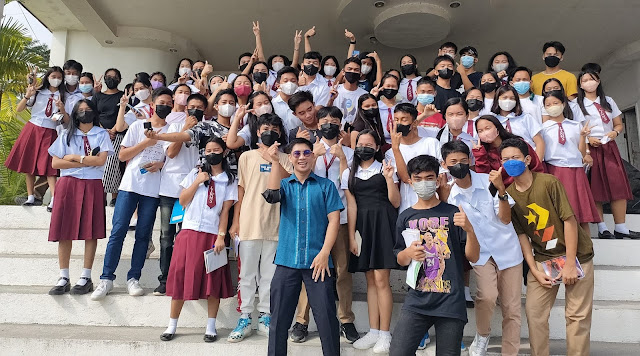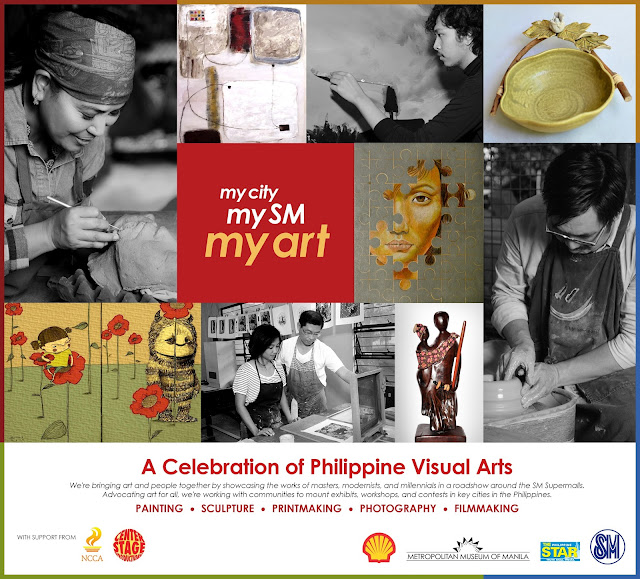On writing in SOX Hiligaynon language
Alvin Q. Larida, captivated by the allure of the Hiligaynon language, is driven to delve into the realm of writing. His academic background in physics during his college years did not prevent him from this literary pursuit, even in the absence of formal training in writing or connections within the writing community. Undeterred, he continues to weave narratives rooted in the province of South Cotabato.
"I found beauty in the Hiligaynon language. Given the scarcity of SOX Hiligaynon pieces, particularly in our region, it feels like the perfect time to contribute to this body of work,” he said.
The Hiligaynon language of SOCCSKSARGEN (SOX) distinguishes itself from its Western Visayas counterpart. It is a linguistic hybrid, interwoven with various languages spoken within the region. This unique blend stands as a testament to the rich and diverse culture of SOX, becoming a source of its strength.
"During those initial stages, navigating the writing community posed a significant challenge, given my lack of a network. I was oblivious to the existence of writers' groups within the region. My background wasn't in language or literature. I was unfamiliar with the technical aspects of writing."
Larida's introduction to the region's literary community came through Arnel Pineda and Adrian Pete Pregonir, who acquainted him with local writers and their events. His first foray into a writing workshop was under the mentorship of Peter S. Nery. Nery's critique of his manuscript and his advice to "find his own language" served as a pivotal moment for Larida. This led him to choose to write in Hiligaynon, a language he feels more at ease with.
Larida immersed himself in the local literary landscape, investing in books and other reading materials to hone his writing skills. These resources became his wellspring of inspiration, enabling him to craft stories with a universal appeal.
In 2018, Larida embarked on his journey of crafting literary works in Hiligaynon, submitting them to various publications across the country. From 2021 to 2022, he ventured further by participating in writing competitions. He aspired to gain recognition for SOX Hiligaynon, celebrating its distinct linguistic characteristics.
In his second endeavor to participate in the esteemed Carlos Palanca Memorial Awards, Larida achieved a commendable second place in the regional category for his moving Hiligaynon short story, Lola Violeta.
Larida's motivation to pen his award-winning piece stemmed from his affinity for Hiligaynon, a language in which he found greater ease of expression. Certain scenes in his story draw from his personal experiences, such as the depictions of "hamyang" and "haya"—the preparation of the burial ceremony that transforms into a familial gathering and celebration. The act of recalling and integrating these memories into his narrative evokes a sense of nostalgia for him.
Larida made a conscious, experimental choice to write his Palanca entry in SOX Hiligaynon. Despite acknowledging a linguistic error from a purist's perspective, the jury appreciated his work. As he noted, some linguistic scholars are receptive to the evolving dynamics within the Hiligaynon language.
"Being a recipient of the Palanca award fuels my passion to craft more narratives set in South Cotabato. It seems to spark a sense of curiosity among the people,” Larida shared.
His immersion in the local literary scene deepened his appreciation for the region's diverse languages and literature. His upbringing in a rural setting, specifically in Surallah, South Cotabato Province, serves as a source of inspiration for his writing. The works of John Iremil Teodoro (or John Remil), Gen Asenjo, Peter Nery, and Alice Gonzales-Tan also inspire him, resonating with him due to their similar settings and depictions of life.
Larida recognizes that not all students today show interest in Hiligaynon literature. They often engage with such works when mandated by their academic curriculum. He acknowledges that not everyone has the ability or inclination to read these local literary pieces. Larida brings attention to the issue of accessibility and its potential impact on the progression of local literature.
"When it is not written or read, the local language may fade away,” he said.
Larida's words highlight the crucial role of active participation in safeguarding a language. In the absence of consistent writing and reading practices, a language stands on the brink of oblivion. His statement serves as a rallying cry for us to value and employ our local languages, thereby guaranteeing their survival and perpetuity.
Fortunately, Larida is not just a writer but also an educator. He embarked on his teaching career in 2015 at Dole Philippines School in Polomolok, South Cotabato. By 2020, he had joined the ranks of DepEd teachers at Libertad National High School in Surallah. As a significant contributor to the literary community, he integrates local literature into their school curriculum by devising school-based materials.
"We often overlook the beauty of our local language when used in creative work. We have become accustomed to mainstream languages like English and Filipino. My aspiration is for our local languages to gain more visibility and recognition. I eagerly anticipate the emergence of a new wave of writers who will champion our local languages.”
Larida emphasizes the need for greater recognition and utilization of our local languages in creative endeavors, as well as the potential for a more diverse literary landscape with increased exposure.
While initially feeling like an "outsider" within the SOX writing community, Larida now recognizes the importance of collaborating with like-minded writers and literary enthusiasts. His goal is to champion local literature and SOX Hiligaynon, striving to enhance its accessibility to the public.
Larida harbors numerous plans for the region, one of which includes a collaborative project focused on creating a Hiligaynon anthology. His goal is to contribute to the production of more literary works in SOX Hiligaynon. As a member of DepEd, he persists in his teaching activities, incorporating pieces from local writers into classroom discussions.
He writes in Kinaray-a, Hiligaynon, and Filipino. His literary prowess has been recognized with numerous accolades for his poems, fiction, and short stories. These include the prestigious Carlos Palanca Memorial Awards for Literature, the Malip-ot nga Sugilanon in South Cotabato, the Leoncio Deriada Prize for Poetry and Fiction, Bantugan sa Panulatan Kinaray-a, Peter’s Prize, and Dungug Kinaray-a.
Driven by his passion for the region’s local language and literature, Larida has many things to accomplish. But he does not lose hope or determination in pursuing his vision for the region’s literary community. He is determined to achieve his vision of a vibrant and diverse SOX literary community that celebrates its voice and stories.






Comments
Post a Comment
The author encourages readers to post sensible comments in order to have meaningful discussions. Posting malicious, senseless and spam comments are highly discouraged.
Thank you for reading Yadu Karu's Blog.